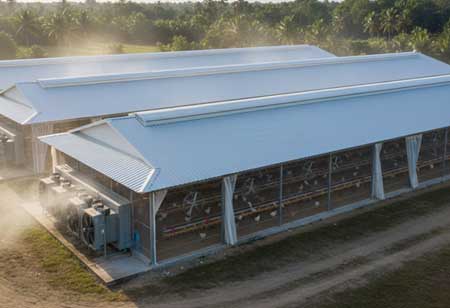Thank you for Subscribing to Agri Business Review Weekly Brief
Nature-Inspired Strategies for Crop Protection
As regulators try to limit the use of many synthetic crop protection chemicals, alternatives extracted from biology offer potentially safer and environmentally benign substitutes.

By
Agri Business Review | Thursday, October 27, 2022
Stay ahead of the industry with exclusive feature stories on the top companies, expert insights and the latest news delivered straight to your inbox. Subscribe today.
Companies introduce environmental-based initiatives such as plant extracts, proteins, and pheromones to replace traditional chemical pesticides.
FREMONT, CA: As regulators try to limit the use of many synthetic crop protection chemicals, alternatives extracted from biology offer potentially safer and environmentally benign substitutes. Despite countries proposing to reduce synthetic pesticide usage, the biocontrol industries complain that the regulatory system is not well facilitated to deal with alternative pest control products such as insect predators, microbes, or substances extracted from natural sources. This is causing delays in getting them onto the market regardless of demand from growers and policymakers.
Volatile Innovations
Insect pheromones are the most popular and established biocontrol agents, used for many years. Many are volatile esters that female moths emit in low concentrations to attract males. Releasing synthetic versions to lure male moths into traps monitors their presence or traps and kills them. Another method is to release high concentrations to confuse the males, preventing them from locating females. This will not kill the insect but put the natural insect pheromones out to disrupt mating.
Specifically for moths and their caterpillars, there is a need to provide new approaches to supplement aged synthetic chemicals. Modern integrated pest management (IPM) strategies combine pheromones and other control practices with synthetic sprays.
Pest control and monitoring with pheromones, particularly sex pheromones, has grown significantly in recent years. Important target pests include codling moths in fruit orchards, tomato leaf miner moths, and the box-tree moth rapidly spreading through gardens. However, there are also new tactics. Companies have developed a chemical lure for the garden chafer beetle, which can kill strawberries and young vegetables using volatiles released by flowers.
Another method is to identify volatiles that plants produce when attacked by insects to attract their predators. Organisations are testing methyl salicylate, a minty odour produced by plants, with commercial raspberry growers. They strive to demonstrate that this approach attracts more predators to control pests such as thrips and aphids.
Harnessing Plants’ Defences
Assuming products can navigate the regulatory pathways, plant extracts are rich pest control sources with the chemical variety they produce to defend themselves against insects and pathogens. Recently, organisations have developed antifungals using extracts from plants. The product is a mixture of different compounds, which is the basis for new immune response-boosting adjuvants for vaccines.
Extracting ingredients from laboratory cultures allows companies to be self-sustaining, producing plants continuously without adverse environmental effects or damaging natural ecosystems. Such products impede fungus growth, especially crucial disease-causing enzymes like laccase. Several organisations look at the molecules plants exude after insect attacks, inducing other countries to invest in defensive structures. This also includes thicker waxy cuticles and defensive leaf hairs to deter pests like aphids.
Recent biocontrol developments with new action modes and initiatives kill bugs and reduce plant damage. As a result, the biological products market tends to grow with rapid biological adoption. Companies introduce biologicals into traditional crops such as fruit and vegetables, but increasingly into row crops. However, there are only a few alternatives to conventional chemical weed killers, and there is still a lot of science to be worked on in biocontrol.





